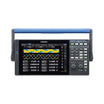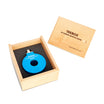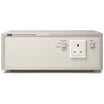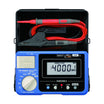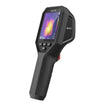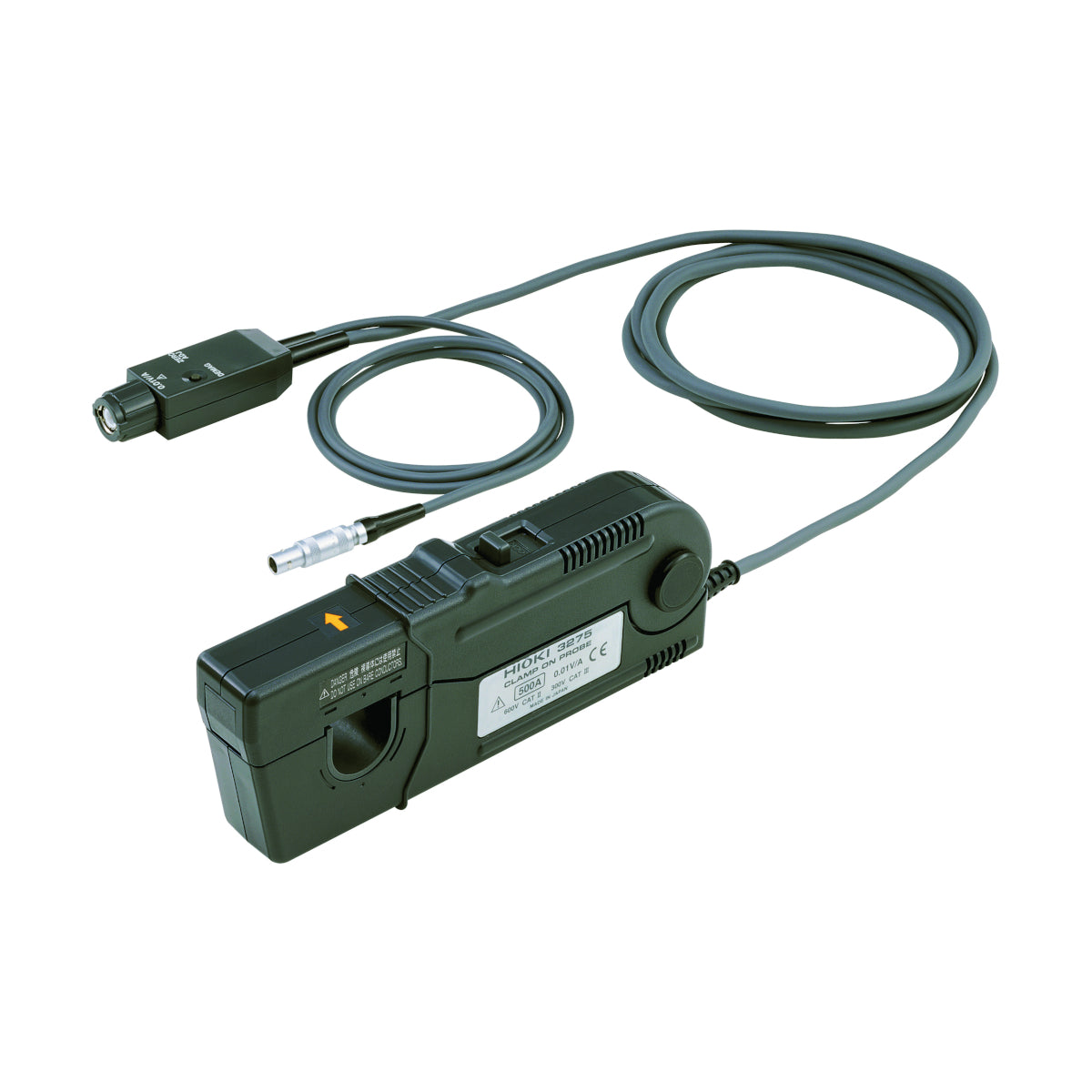
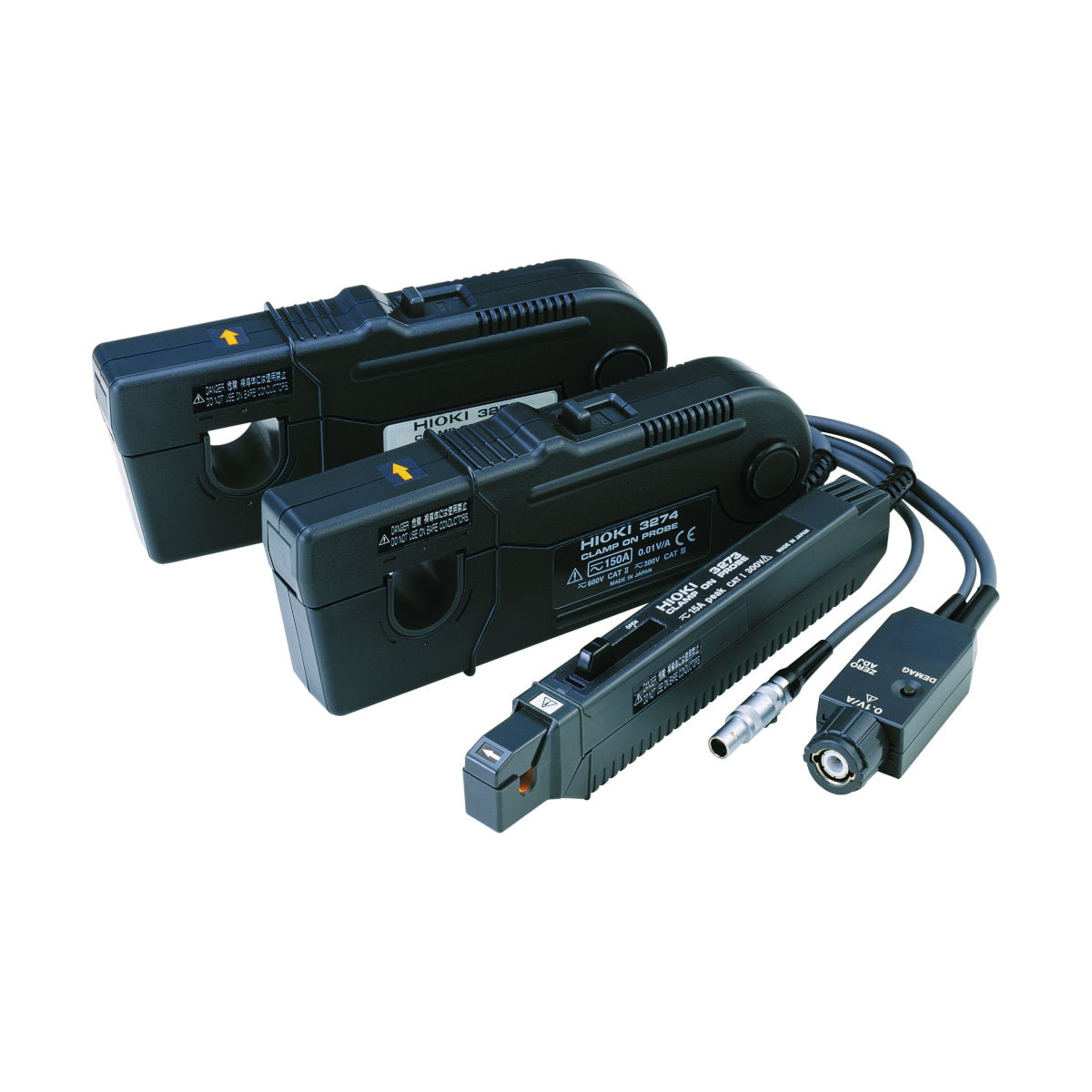
Hioki 3275 Clamp On Probe
Use our chat for personal support or contact us via +45 31 33 18 19 or salg@GOmeasure.dk
- Wideband Current Probe for Oscilloscopes
Discover the possibilities
More information
Description
Hioki flat bandwidth current probes are best-in-class current sensors for use with Memory HiCorders and high performance oscilloscopes. The 3275 supports wide DC to 2 MHz bandwidth signals and 500A of continuous high input. The probe is designed with an electrostatic shield to reduce the effects of electric fields, making it ideal for measuring in environments in which the probe will be subjected to the effects of nearby magnetic fields, such as locations with high-voltage switching control equipment such as an inverter or motor.
Use with an instrument with a high input impedance of 1 MΩ or higher.
Key Features
- Waveform observation across a wide band from DC to MHz
- Connects directly to oscilloscope or Memory HiCorder BNC input terminal (*1)
*1: Connecting the probe's metal BNC terminal to a Memory HiCorder’s plastic BNC terminal may distort or damage the plastic terminal. To avoid damage, please connect and disconnect the probe cable straight to the BNC terminal of the waveform monitoring equipment.
Paired with the zero-flux method, a proprietary thin-film Hall element makes possible high-performance current sensors.
Wideband current sensors use the "zero flux method (Hall element detection type)" to measure. High-frequency currents are detected with the winding (CT method), and low frequency currents including DC are detected with the “Hall element.”
Hall element detection
Hall element detection is characterized by a simple structure and a sensor section that can easily be downsized. Hioki combines our own proprietary thin-film Hall elements with the zero flux method to deliver sensors that can conduct measurements over a wide range of frequencies, from DC to MHz bands
Ideal for waveform observations using a MEMORY HiCORDER or oscilloscope, Hall element detection achieves a high S/N ratio in the wideband range, making them particularly well-suited for design verification of electronic circuitry such as high-speed signal circuits.Zero flux method
The zero flux method is a measurement method used in both
high-accuracy and wideband sensors. As the principles the sensor is based on give it both low operating magnetic flux level and low insertion impedance, it is characterized by its lack of influence on the measured object and low instrument loss.
Specifications
Basic specifications
Accuracy guaranteed: 1 year
| Frequency bandwidth | DC to 2 MHz (-3 dB) |
|---|---|
| Rise time | 175 ns or shorter |
| Noise level | 25 mA rms max. (bandwidth limited to 20 MHz) |
| Continuous allowable input | 500 A rms (requires derating at frequency) |
| Max. allowable peak input | 700 A peak (non continuous) |
| Amplitude accuracy (30 min. after power-on, after degaussing and zero-adjustment) | ±1.0 % rdg. ±5 mV f.s. (DC, 45 to 66 Hz, 0 to 500 A rms) ±2.0 % rdg. (DC, 45 to 66 Hz, 500 A to 700 A peak) |
| Output rate | 0.01 V/A (The output of this probe is internally terminated) |
| Measurable conductors | Insulated conductor |
| Core diameter | φ 20 mm (0.79 in) |
| Power supply | ±12 V ±0.5 V, 7.2 VA max. |
| Dimensions and mass | 176 mm (6.93 in)W × 69 mm (2.72 in)H × 27 mm (1.06 in)D, 520 g (18.3 oz) Sensor cable BNC terminal: 2 m (6.56 ft), Power cable: 1 m (3.28 ft) |
| Included accessories | Instruction manual ×1, Carrying case × 1 |
Documents
Datasheet:
Options
Video
Hioki flat bandwidth current probes are best-in-class current sensors for use with Memory HiCorders and high performance oscilloscopes. The 3275 supports wide DC to 2 MHz bandwidth signals and 500A of continuous high input. The probe is designed with an electrostatic shield to reduce the effects of electric fields, making it ideal for measuring in environments in which the probe will be subjected to the effects of nearby magnetic fields, such as locations with high-voltage switching control equipment such as an inverter or motor.
Use with an instrument with a high input impedance of 1 MΩ or higher.
Key Features
- Waveform observation across a wide band from DC to MHz
- Connects directly to oscilloscope or Memory HiCorder BNC input terminal (*1)
*1: Connecting the probe's metal BNC terminal to a Memory HiCorder’s plastic BNC terminal may distort or damage the plastic terminal. To avoid damage, please connect and disconnect the probe cable straight to the BNC terminal of the waveform monitoring equipment.
Paired with the zero-flux method, a proprietary thin-film Hall element makes possible high-performance current sensors.
Wideband current sensors use the "zero flux method (Hall element detection type)" to measure. High-frequency currents are detected with the winding (CT method), and low frequency currents including DC are detected with the “Hall element.”
Hall element detection
Hall element detection is characterized by a simple structure and a sensor section that can easily be downsized. Hioki combines our own proprietary thin-film Hall elements with the zero flux method to deliver sensors that can conduct measurements over a wide range of frequencies, from DC to MHz bands
Ideal for waveform observations using a MEMORY HiCORDER or oscilloscope, Hall element detection achieves a high S/N ratio in the wideband range, making them particularly well-suited for design verification of electronic circuitry such as high-speed signal circuits.Zero flux method
The zero flux method is a measurement method used in both
high-accuracy and wideband sensors. As the principles the sensor is based on give it both low operating magnetic flux level and low insertion impedance, it is characterized by its lack of influence on the measured object and low instrument loss.
Basic specifications
Accuracy guaranteed: 1 year
| Frequency bandwidth | DC to 2 MHz (-3 dB) |
|---|---|
| Rise time | 175 ns or shorter |
| Noise level | 25 mA rms max. (bandwidth limited to 20 MHz) |
| Continuous allowable input | 500 A rms (requires derating at frequency) |
| Max. allowable peak input | 700 A peak (non continuous) |
| Amplitude accuracy (30 min. after power-on, after degaussing and zero-adjustment) | ±1.0 % rdg. ±5 mV f.s. (DC, 45 to 66 Hz, 0 to 500 A rms) ±2.0 % rdg. (DC, 45 to 66 Hz, 500 A to 700 A peak) |
| Output rate | 0.01 V/A (The output of this probe is internally terminated) |
| Measurable conductors | Insulated conductor |
| Core diameter | φ 20 mm (0.79 in) |
| Power supply | ±12 V ±0.5 V, 7.2 VA max. |
| Dimensions and mass | 176 mm (6.93 in)W × 69 mm (2.72 in)H × 27 mm (1.06 in)D, 520 g (18.3 oz) Sensor cable BNC terminal: 2 m (6.56 ft), Power cable: 1 m (3.28 ft) |
| Included accessories | Instruction manual ×1, Carrying case × 1 |


